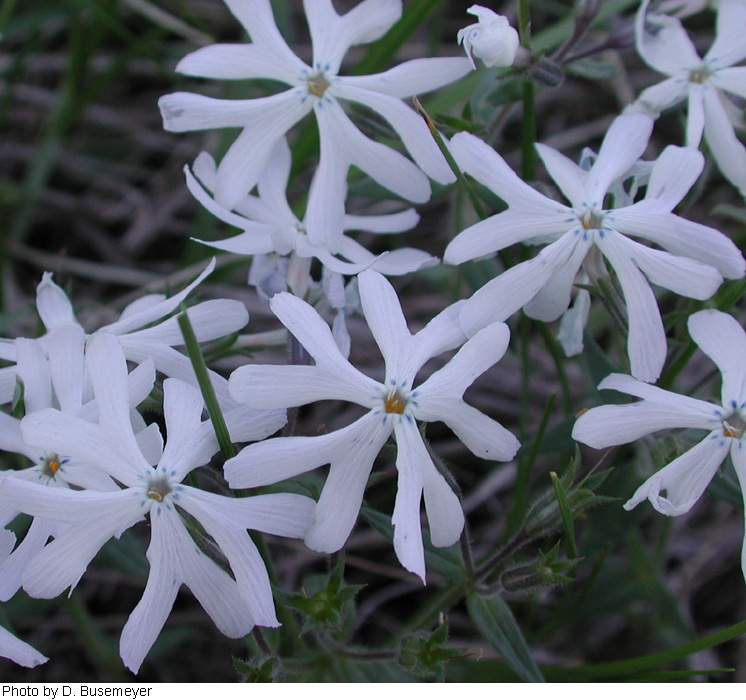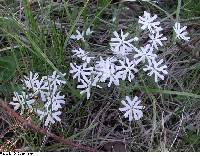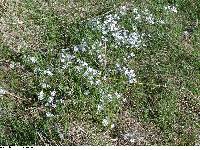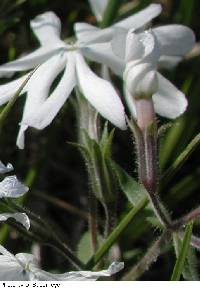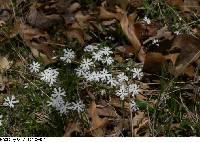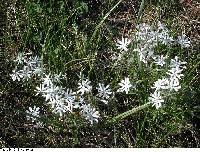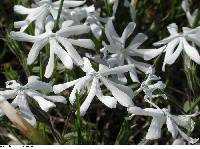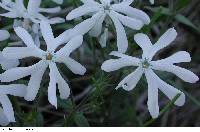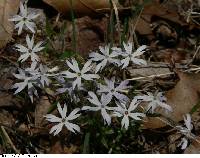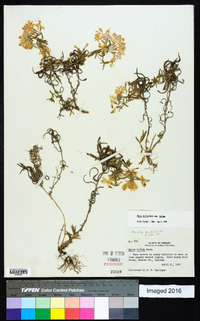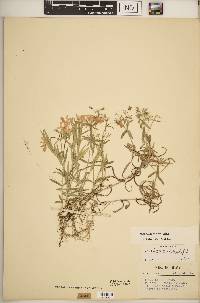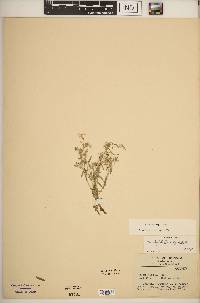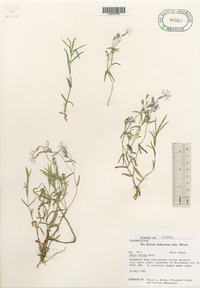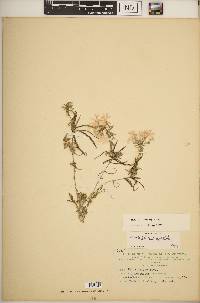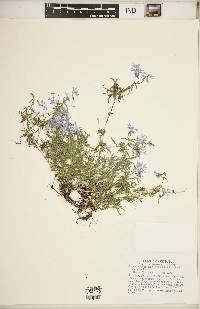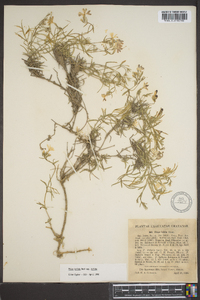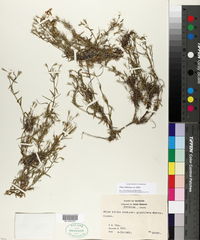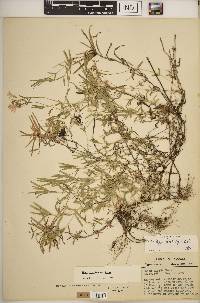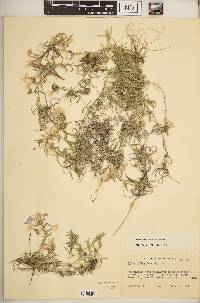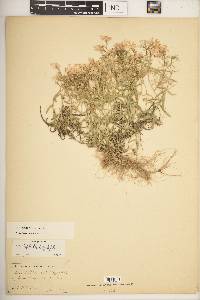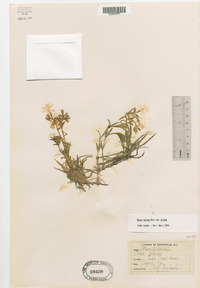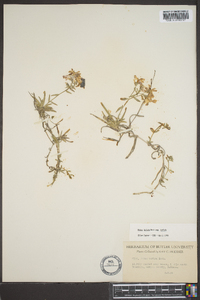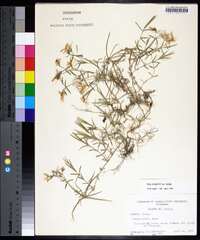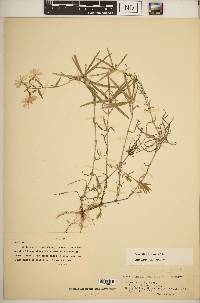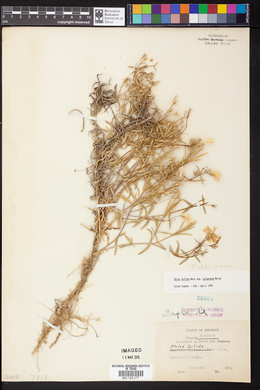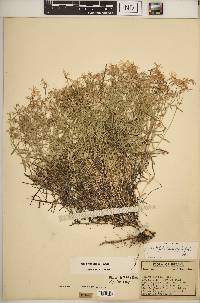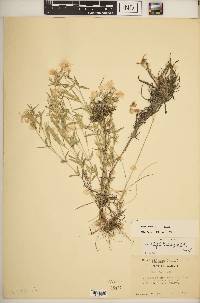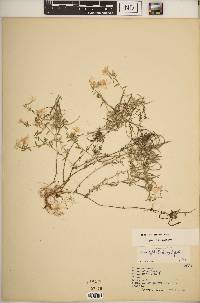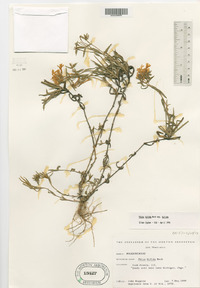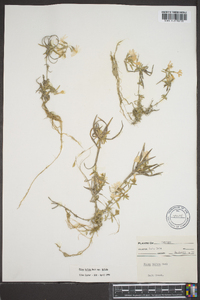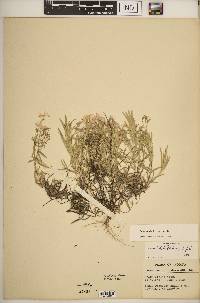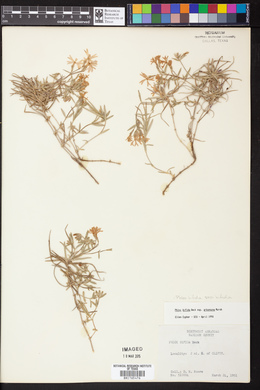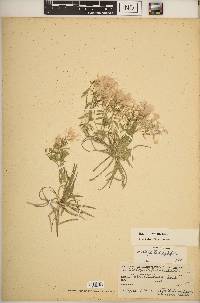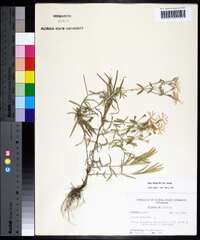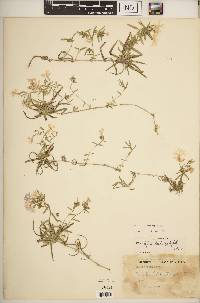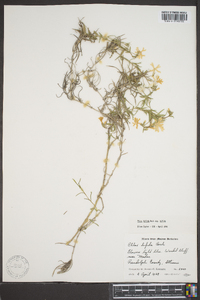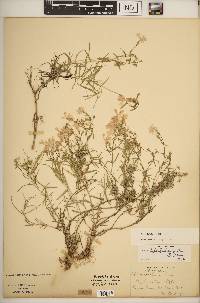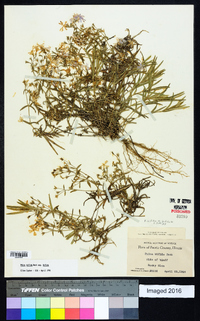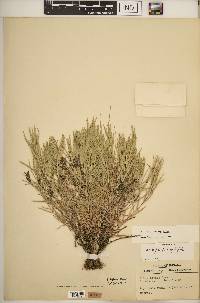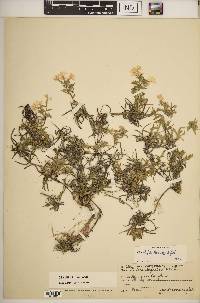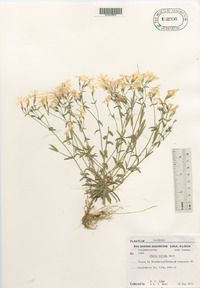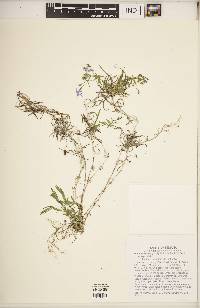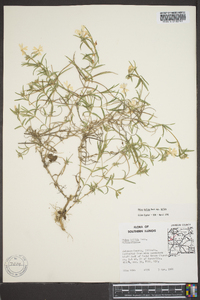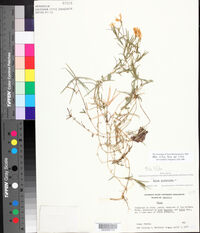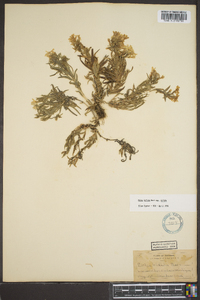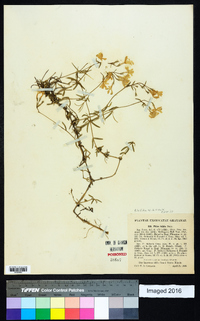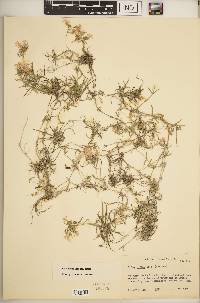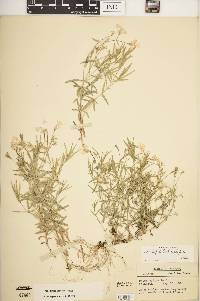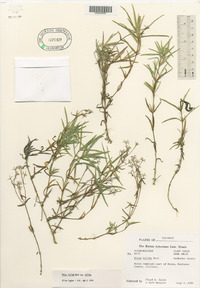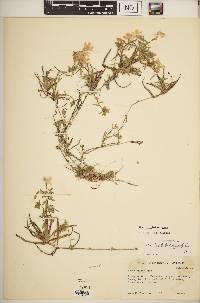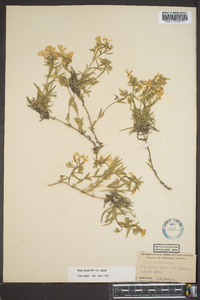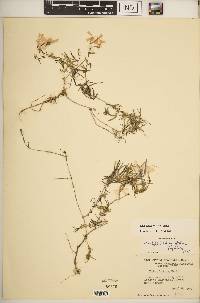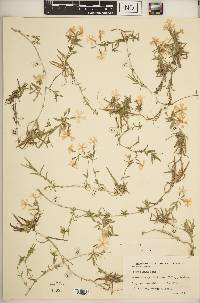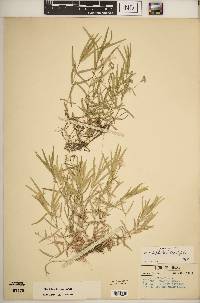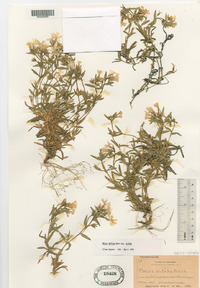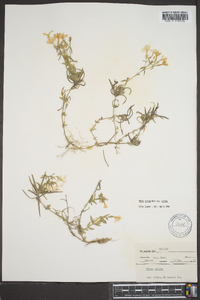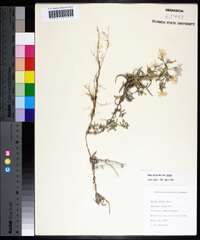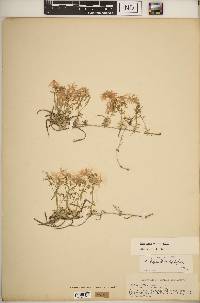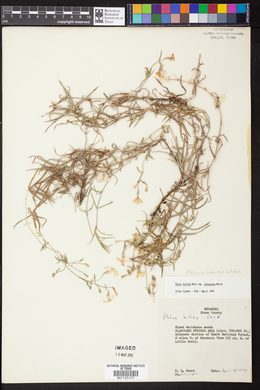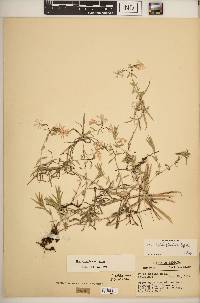
|
|
|
|
Family: Polemoniaceae
Cleft Phlox
|
Perennial herb 10 - 20 cm tall Leaves: opposite, stalkless, 1.5 - 6 cm long, 1 - 4 mm wide, linear to very narrowly elliptic, mostly hairless except for the rounded (not flat) edges, which are sparsely fringed with slender bristles near the base. Inflorescence: of terminal, hairy (mostly glandular-hairy), open branches with three to twelve flowers on individual stalks up to 3 cm long. Flowers: lavender (sometimes lilac to white), 1.4 - 2 cm wide, radially symmetric with a slender tube, and abruptly spreading, two-cleft lobes, which sometimes have a pair of purple stripes at their base. The fragrance of the flower is mildly sweet. Sepals: five, glandular-hairy, 0.7 - 1 cm long overall, but fused for about half their length, then separating into linear lobes with very long, narrow, stiff, pointed tips. Petals: five, but fused into a 0.9 - 1.4 cm long tube, then separating into about 1 cm long, 0.8 cm wide, deeply notched or cleft lobes. The lobe notches are up to 0.5 cm deep, or one-quarter to one-half the length of the lobe, and thus the lobes appear v-shaped. Stamens: five, with filaments attached at different heights along the inside of the petal tube, and about the same length as the petal tube, but not extending far beyond it. Pistil: with a single, three-chambered, superior ovary; and three, elongate (0.6 - 1.2 cm long, much longer than stigmas or ovary), fused styles, which separate for only about 1 mm before ending in three, linear stigmas. Fruit: a three-valved, three-chambered, egg-shaped capsule with one or several, 3.5 - 6 mm long, ellipsoid seeds per chamber. Sterile stems: colony-forming, trailing or decumbent, more or less densely matted or tufted, with soft-hairy, surface-crawling shoots. Flowering stems: somewhat erect, soft-hairy and glandular-hairy, with only about four pairs of leaves, and the middle internodes more than 1.5 cm long. Similar species: Phlox bifida ssp. bifida is similar to P. subulata, but that species has leaves only up to 1 cm long, and shallower notched petal tips (less than 2 mm deep, and only up to one-fourth the length of the rest of the petal lobe). Phlox nivalis is also superficially very similar, but it has much shallower notched petal tips, and much shorter styles and stamens, which never exceed the petal tube in length. There is another subspecies of P. bifida, P. bifida ssp. stellaria, which occurs south of the Chicago Region, but it differs from the typical subspecies by having non-glandular hairs or even no hairs in the inflorescence. Flowering: April to June Habitat and ecology: Locally frequent in sandy scrub-oak savannas, and also occurring less frequently in sandy open ground in general. Occurence in the Chicago region: native Author: The Field Museum From Flora of Indiana (1940) by Charles C. Deam Within the range of the species, the number of gland-tipped hairs varies greatly. In the northern part of its range the young growth, at least, has an abundance of gland-tipped hairs. This form has been named P. bifida var. glandifera Wherry, and has been reported from St. Joseph County by Sr. Elizabeth McDonald. In the center of its range the glands become fewer and may be present only on the pedicels, and in the southeastern part of its range the plants may be glandless. A thinly pubescent to glabrous extreme is found among Harrison, Montgomery, and St. Joseph County specimens and is known as Phlox bifida var. stellaria (Gray) Wherry. …… Indiana Coefficient of Conservatism: C = 7 Wetland Indicator Status: N/A |
|
|
|

